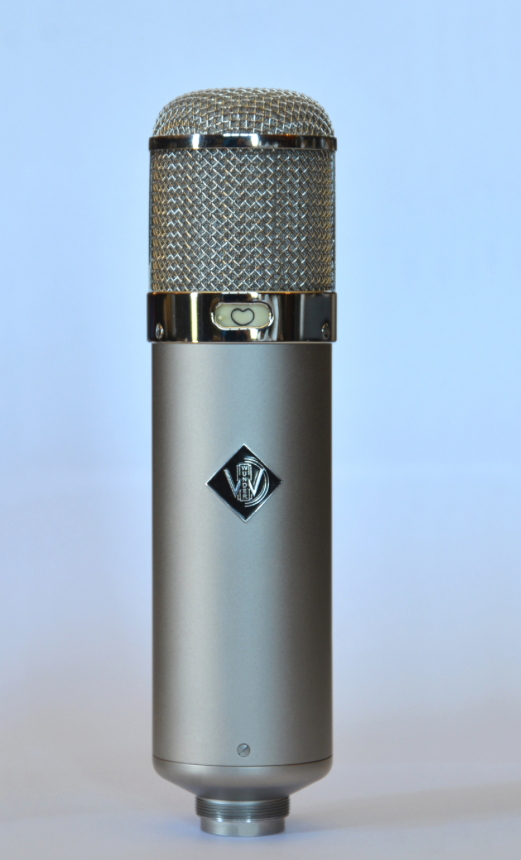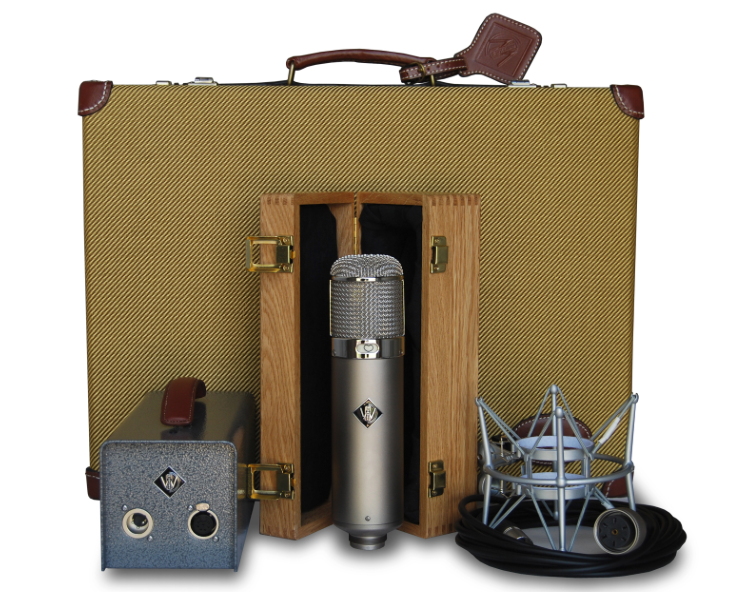Wunder CM7 Microphone — bringing
vintage sound to the new millennium

What if you could get a $10,000 microphone for half price? And
what if that microphone replicated the sound of the legendary
Neumann U47, the microphone used by artists such as Frank
Sinatra, The Beatles, U2, Tom Petty, Bruce Springsteen, Aretha
Franklin, Joni Mitchell, Van Morrison and pretty much every
vocalist you've ever admired?
And what if you could get this vintage mic brand new?
Read on.
IT All STARTS WITH THE TUBE
Wunder Audio owner and inventor Mike Castoro knew there were
three primary elements he would need to replicate to capture the
legendary Neumann U47 sound — the tube, the transformer, and the
capsule.
That first task — finding the right tube — would prove to be
tricky. Even Germany's revered mic builder Georg Neumann
couldn't figure that one out.
Back in the mid-70s, Neumann Microphone Company decided to stop
making the U47, its flagship microphone, because the tube it was
built upon — the legendary Telefunken VF14 — was no longer being
manufactured. And Georg couldn't find a suitable replacement.
So when Castoro decided to make his U47 clone that was his first
challenge — what should he use to replace the all-important VF14
tube?
At first, he built a half dozen microphones using the original
VF14 tubes, just to see what made them tick. There were still a
few tubes floating around and you could buy them used on eBay
for $2,000 (or more) a pop. But to build an affordable mic,
Castoro knew he'd soon have to find a replacement.
After trying tube after tube, he discovered the affordable
Telefunken EF14.
"The EF14 is the savior of the mic," Castoro says.
Still, to make the tube behave like the vintage VF14 he had to
add what he calls a "dummy load" — a capacitor and resistor
soldered to the back of the tube socket.
Once the EF14 behaved like the VF14, it sounded like the VF14.
And when the EF14 sounded right, Castoro knew he was 1/3 the way
home.
Because it's all about the sound.
IRON IN THE WORKS — THE CM7 TRANSFORMER
The transformer used in the U47 is the second key element to
recreating its sound, but Castoro didn't want just any U47
transformer. He wanted the big one, the Mu-Metal transformers
wound to the original Braunbuch specifications and used in the
rare "Large Badge" U47s.
"The CM7 is the ONLY U47 clone that offers the larger
transformer found in the very sought after early
serial-numbered, long-body U47s," Castoro says. "There were
approximately 6000 U47s made, but only the first 1000 made
between 1949 and 1952 had the larger BV8 transformer. This large
version had 25 percent more windings for a bigger sound."
The bigger sound comes from the bigger low end. The
large transformer rolls off at 20Hz rather than the
thinner 40Hz, and as an end result — vocals sound huge.
All transformers made for the CM7 are either hand
wound by Castoro himself (yes, he still goes to his
workshop nearly every day) or by one of the two
technicians he personally trained for this delicate craft.
Absolutely no cheap Chinese knockoff components are used
in the CM7. Believe it.
RECREATING THE
ORIGINAL M7 CAPSULE
Unlike finding the right tube, finding a replica of the M7
capsule was relatively easy. Only one person in the world makes
a perfect M7 capsule to original specs, and his name is
Siegfried Thiersch, the renowned German mic builder who supplies
the entire Gefell Microphone line.
"Siegfried is simply the best. His M7 capsules are meticulously
stretched and glued to the rim, and never screwed to the back
plate," Castoro says.
And this version of the M7
isn't your father's microphone capsule — it's your
grandfather's.
Wunder's version is called the Berlin M7, as opposed
to the Gefell M7. The Berlin M7 is machined differently
from the Gefell, with three isolator rims instead of two.
It's the capsule Neumann used in the '50s and '60s.
Here's how it's made: The one-inch diaphragm is glued on
with precise tension to a very thin rim, similar to stretching
a skin over a snare drum. The rims are milled onto a piece
of brass that contains 90 holes per side and then
super-polished in a process called “lapping.” Unlike the
original M7s, which were 8-10 microns thick and made of
PVC, the Wunder M7 is made of a six-micron thick Mylar
substrate because it ages better.
If you wanted to, you could take the capsule from a CM7,
put it into a vintage UM7, and the vintage mic would sound
virtually the same.
But why would you want to do that?
DON'T FORGET THE GRILLE
In the process of making the CM7 microphone, Castoro discovered
what he calls the "overlooked fourth element" to recreating the
U47 sound — the grille.
"Our Wunder Audio CM7 grille is true to the vintage design. We
have three gauges of grille mesh — a large outer mesh, a
medium-sized inner mesh, and then, most importantly, a fine mesh
that goes in between the other two."
Not only does the grille head look right, it creates something
akin to the electronic properties of a Faraday cage with its
acoustic interaction with the capsule. In short, it improves the
sound.
And it's all about the sound.
HAND ASSEMBLED IN AUSTIN, TEXAS
Your
Wunder CM7 is nestled in velvet and softly secured in place
in a foam-lined, quarter-sawn oak box. Each microphone comes
with an authentically historical shock mount, proprietary
Wunder Audio power supply, and an original large
Tuchel-connected mic cable.
These are all safely encased in a precision,
velvet-foam-lined tweed case, using the same tweed featured
on vintage Fender guitar cases. The CM7 case is a work of
art in itself and includes a leather handle and combination
lock to keep your microphone secure.
Still interested? Of course you are, so why not take it for
a test run. Click the link below and Vintage King will
arrange to have it delivered to your studio for a listening
test. If you don't like what you hear, send it back in the
condition it was sent and you won't be charged a dime. In
fact, we'll give you 30 days to demo the CM7 — long enough
to use in a session. Why? Because we know once you hear it
you won't want to give it back.
So click on the link below and give it a try. Like we've
said before — it's all about the sound.
TRY BEFORE YOU BUY



